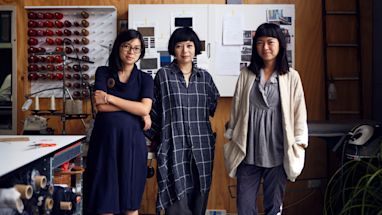From snails and seaweed to crabs and limpets, the harbour suburb of Rushcutters Bay is ready to attract more sea plants and creatures with a new living seawall.
The seawall of 90 habitat panels, stretching 24 metres in total, features nooks and crevices to help local marine life thrive.
The project by Sydney Institute of Marine Science (SIMS) was supported with a $20,000 City of Sydney grant.
Project co-lead, associate professor Melanie Bishop, said the project aims to increase biodiversity and improve water quality.
“More than 50% of the Sydney Harbour shoreline is made up of seawalls and research shows these seawalls do not support biodiversity in the same way as natural shorelines,” Melanie said.
“We're bringing back missing microhabitats such as rock pools and crevices. These will provide more space for barnacles and seaweeds to live, while small fish, snails and crabs will be able to hide inside the holes and crevices.”

The institute worked with design studio Reef Design Lab habitat, using 3D printing techniques to shape the habitat panels and attract different species.
Project manager Dr Maria Vozzo said marine scientists will monitor the microhabitats of each panel and the changing nature of local ecosystems.
“We anticipate that the habitat panels at Rushcutters Bay will encourage growth of a variety of marine species, including oysters and mussels that help improve water quality, seaweeds that provide food for marine life and help sequester carbon, and snails, limpets, crabs and chitons,” Maria said.
“We also expect small fish like blennies and gobies to use the panels as habitat and larger fish like luderick or bream to use the panels as foraging grounds.”
Living seawalls have previously been installed at Milsons Point, Sawmillers Reserve in McMahons Point, Clontarf and Fairlight.
Melanie said living seawalls at Milsons Point and McMahons Point, which have been in place for 18 months, have proven to be a success – a promising sign for what’s to come at Rushcutters Bay.
“These living seawalls have enhanced biodiversity, bringing species back to the shoreline,” Melanie said.
“The numbers and types of species found on the panels is greater than in nearby manmade shorelines – and they match the numbers found along natural shorelines.
“The program has also shown that the moist and shaded microhabitats of the panels can reduce temperatures by as much as 10 degrees, which may enable species to persist in a warming climate.”
SIMS is a partnership between Macquarie University, the University of NSW, the University of Sydney and the University of Technology, Sydney, bringing together over 100 scientists and graduate students specialised in marine science.
Published 8 June 2020, updated 16 June 2020



